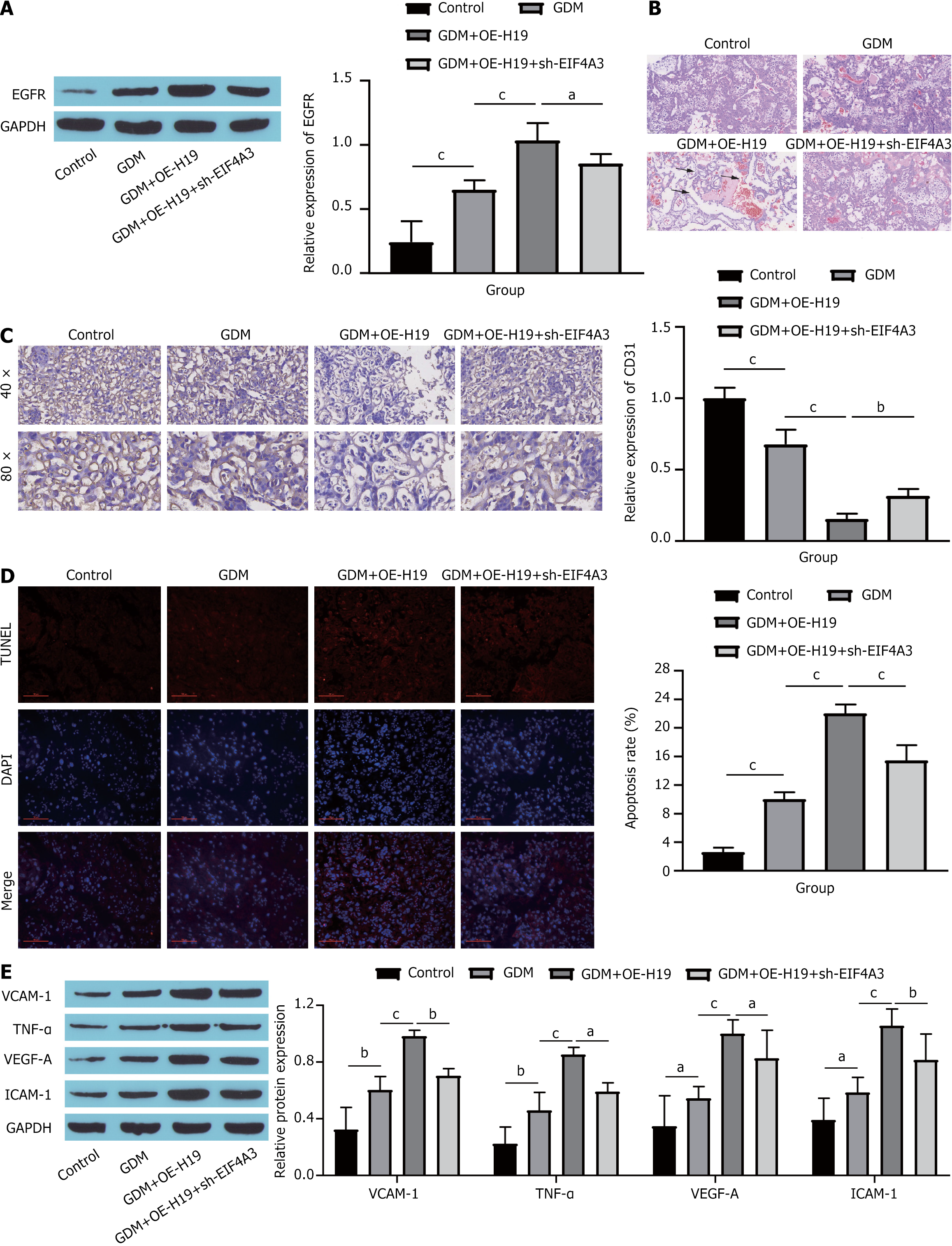Copyright
©The Author(s) 2025.
World J Diabetes. Jun 15, 2025; 16(6): 105173
Published online Jun 15, 2025. doi: 10.4239/wjd.v16.i6.105173
Published online Jun 15, 2025. doi: 10.4239/wjd.v16.i6.105173
Figure 6 EIF4A3 binding to long noncoding RNAs H19 to increase the expression of epidermal growth factor receptor promotes endothelial cell dysfunction in mice with gestational diabetes mellitus.
A: Western blot showing epidermal growth factor receptor expression in mouse placental tissue; B: Pathological changes in mouse placental tissue observed with hematoxylin-eosin staining; C: Immunohistochemistry of cluster of differentiation 31 in mouse placental tissue; D: Cell apoptosis in mouse placental tissue detected by terminal deoxynucleotidyl transferase-mediated deoxyuridine triphosphate-nick end labelling staining; E: Western blot showing the expression of endothelial cell dysfunction markers in mouse placental tissue. aP < 0.05. bP < 0.01. cP < 0.001. EGFR: Epidermal growth factor receptor; GAPDH: Glyceraldehyde-3-phosphate dehydrogenase; OE-H19: Overexpression H19; sh-EIF4A3: Short hairpin RNA targeting EIF4A3; GDM: Gestational diabetes mellitus; TUNEL: Terminal deoxynucleotidyl transferase-mediated deoxyuridine triphosphate-nick end labelling; DAPI: 4’,6-diamidino-2-phenylindole; CD31: Cluster of differentiation 31; VCAM-1: Vascular cell adhesion molecule-1; TNF-α: Tumor necrosis factor-α; VEGF-A: Vascular endothelial growth factor-A; ICAM-1: Intercellular cell adhesion molecule-1.
- Citation: Tang D, Wang CF, Wang J, Jing XT, Ma J. Mechanism of the epidermal growth factor receptor in promoting endothelial cell dysfunction in gestational diabetes mellitus. World J Diabetes 2025; 16(6): 105173
- URL: https://www.wjgnet.com/1948-9358/full/v16/i6/105173.htm
- DOI: https://dx.doi.org/10.4239/wjd.v16.i6.105173









